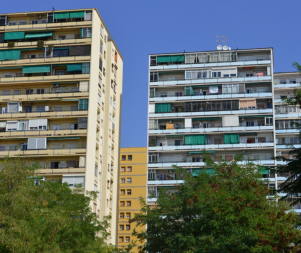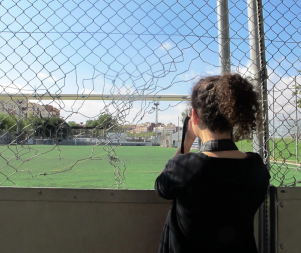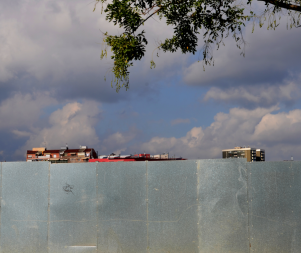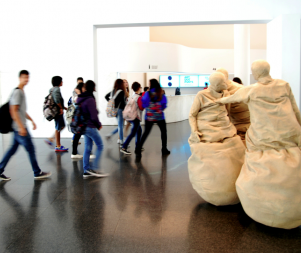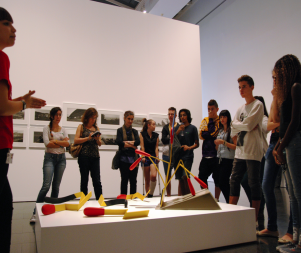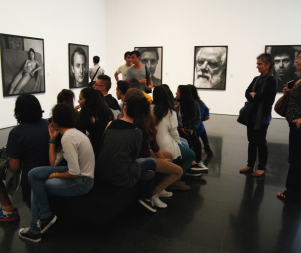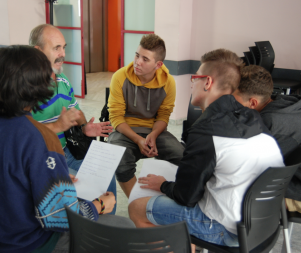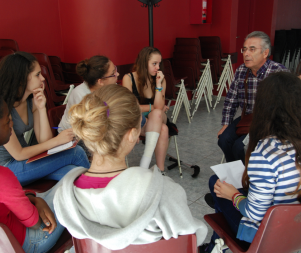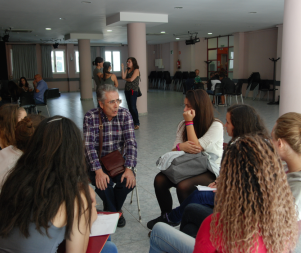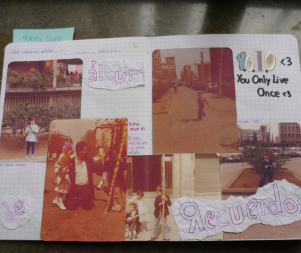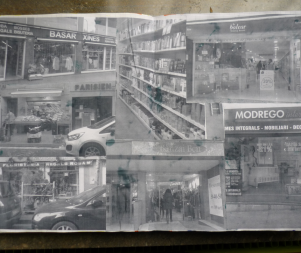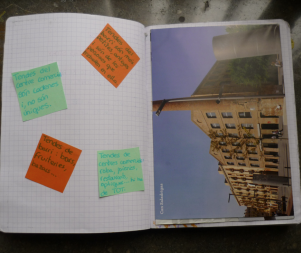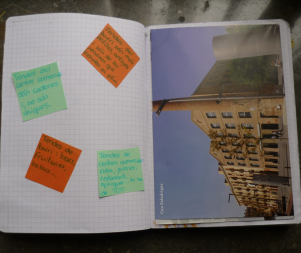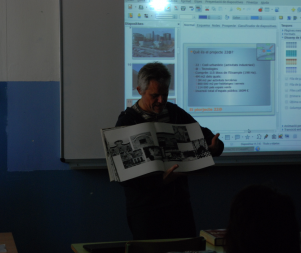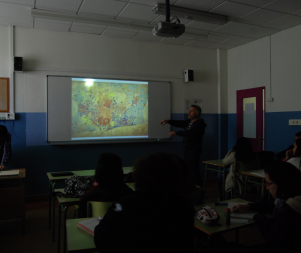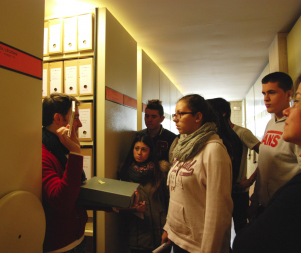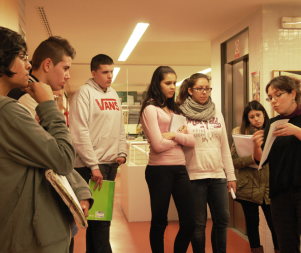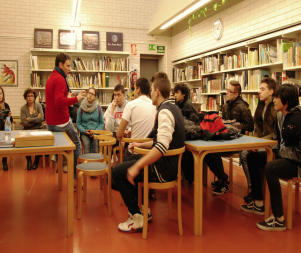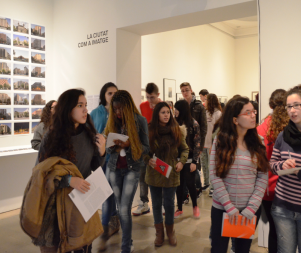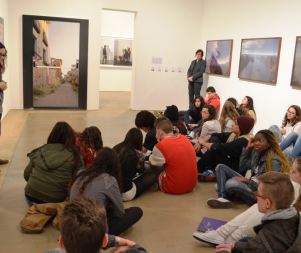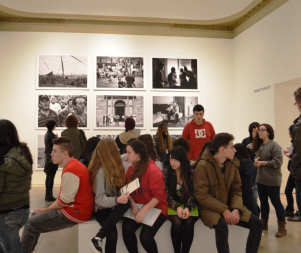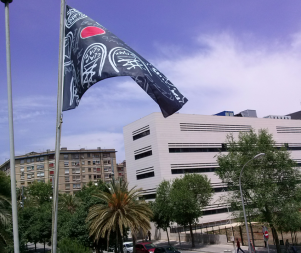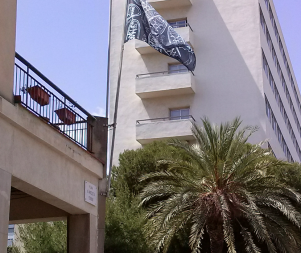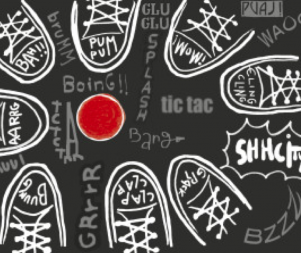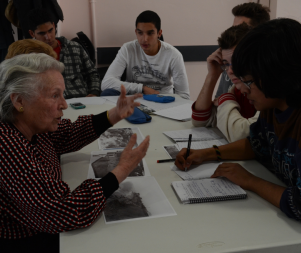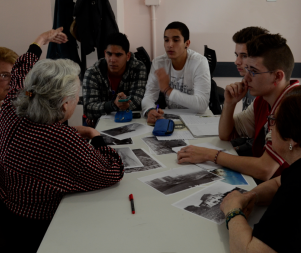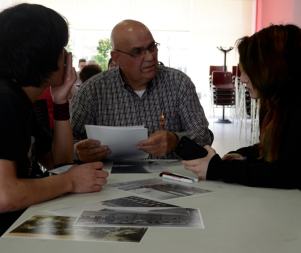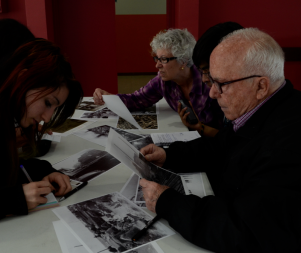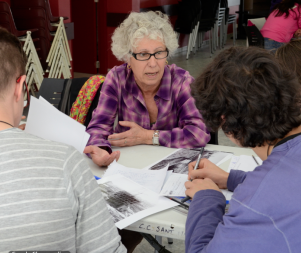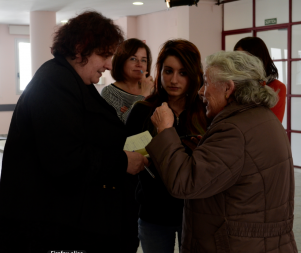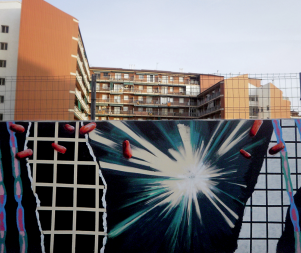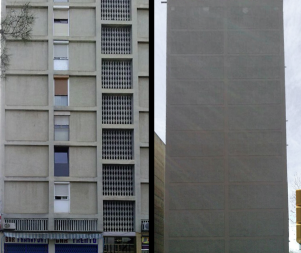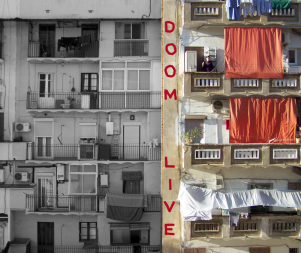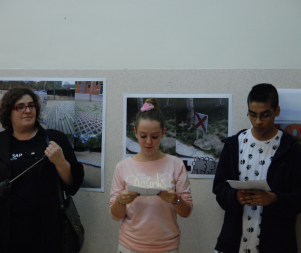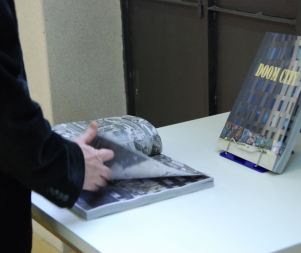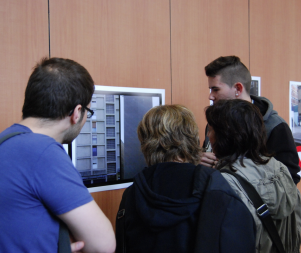- 14th EDITION 2022 / 2023
- 13th EDITION 2021 / 2022
- 12th EDITION 2020 / 2021
- 11th EDITION 2019 / 2020
- 10th EDITION 2018 / 2019
- 9th EDITION 2017 / 2018
- 8th EDITION 2016 / 2017
- 7th EDITION 2015 / 2016
- 6th EDITION 2014 / 2015
- 5th EDITION 2013 / 2014
- 4th EDITION 2012 / 2013
- 3rd EDITION 2011 / 2012
- 2nd EDITION 2010 / 2011
- 1st EDITION 2009 / 2010
Montserrat Soto IN RESiDENCE at the School Joan d’Àustria
PHOTOGRAPHIC EXPLORATION OF THE NEIGHBOURHOOD
First photographic exploration of the neighbourhood.The artist Montserrat Soto suggested that the theme of the research project should be the transformations that have taken place in the Sant Martí neighbourhood. First of all, the group made a photographic exploration of the area around the school. Secondly, each pupil was asked to take a photo of what they could see from the windows of their home. Together, these photographs formed the starting-point for thought and discussion.
VISIT TO MACBA
At the beginning of the course, the group went on a visit to the MACBA Collection with a route specially designed to enable them to see works by other contemporary artists who also explore the themes of the transformation and history of the city.
Works in the MACBA Collection that reflect transformation provided the guiding thread for the tour of the gallery. For example, the group discovered Manolo Laguillo and Xavier Ribas's photographs of Barcelona, and particular mention was also made of Claes Oldenburg's model for the public sculpture Els mistos [The Matches], installed in Horta-Guinardó district.
FIRST INTERVIEW WITH PEOPLE AT THE SENIOR CITIZENS' SOCIAL CENTRE
The group also wanted to include accounts by local elderly people in their research into transformations in the neighbourhood. To this end, a first session was organised at the social centre in order to interview four people. The interviews were recorded in order to established a first base for the research.
CHOICE OF THEMES FOR THE PERSONAL NOTEBOOKS
To extend the research and explore more specific themes, each pupil was asked to study one particular theme: immigration, shops, the public space, etc. This research was documented in personal notebooks in the form of texts, newspaper and magazine clippings, photographs, drawings, etc
GUESTS
Sessions with people who know the neighbourhood.
In order to learn how cities are designed and redesigned, the urban planning expert Quim Rosell (who also helped to design the growth of the Sant Martí neighbourhood) was invited to discuss the transformations that the city of Barcelona has undergone over the last 150 years, particularly how this has affected the Sant Martí de Provençals neighbourhood. The information provided by this town planner was also included in some of the pupils' notebooks.
A second guest speaker was the historian José Àngel Borlán, an expert on the history of the transformation of this neighbourhood, a local resident and former pupil at Institut Joan d'Àustria, as well as being familiar with the history of the social protest movement in Sant Martí de Provençals.
VISIT TO THE SANT MARTÍ ARCHIVE
Another main source of research were the historic photographs of the neighbourhood conserved in the Sant Martí Archive.The group visited this archive and selected a series of old photographs documenting the development of the Sant Martí neighbourhood, provided in the form of digital copies. The group would later work with these images in cooperation with senior citizens in the neighbourhood.
VISIT TO THE EXHIBITION A COP D'ULL [IN SIGHT] (LA VIRREINA IMAGE CENTRE)
The visit to the exhibition A cop d'ull [In Sight]. Recent Photographic Visual Culture in Barcelona was prepared specially to connect to the research process launched as part of the residency.
The tour of this show paid particular attention to works showing transformations in the city of Barcelona. The exhibition included two works by Montserrat Soto, and discussion also centres on these.
ONOMATOPOEIC FLAGS
Montserrat Soto suggested that the pupils should create their own flag together. The flag would represent them and could be hung from the school building. The group designs the flag after studying works by contemporary artists that have explored theme and after discussing the expressive possibilities of onomatopoeias.
SECOND MEETING AT THE SENIOR CITIZENS' SOCIAL CENTRE
After the pupils had spent some time working with the archive photographs, creating their own materials and studying specific themes, a second work session was arranged with the senior citizens at the social centre. The pupils and Montserrat Soto ask the people there about the subjects they are studying and also about the photographs from the Sant Martí Archive. This intervention took the form of notes written by the people interviewed.
The senior citizens from Sant Martí neighbourhood took part in the project on two occasions (one at the start of the academic year, the other at the beginning of the third term), enabling the pupils to interview them. At the second session, the pupils and the people from the social centre focused their work on the old photographs. The elderly folk cooperated by writing down their memories associated with the photos.
INTERVENTION ON THE PHOTOGRAPHS TAKEN AND THE ARCHIVE IMAGES
Two materials were produced to culminate the research process: a book was published that contained the photographs and the materials generated; and each pupil took a photograph related to the theme they had selected at the start. Several sessions were devoted to producing these works, each time using a different procedure or technique (collage, painting, writing), but always based on the medium of photography.
PRESENTATION OF THE BOOK DOOM CITY. BARCELONA I SANT MARTÍ DE PROVENÇALS AND THE PHOTOGRAPHY EXHIBITION
The presentation took place at the school itself and was staged jointly with Institut Infanta Isabel d'Aragó. The pupils and Montserrat Soto described the process and results, showing the pupils' final photographs and the book Doom City, which details the entire research and creative process.

